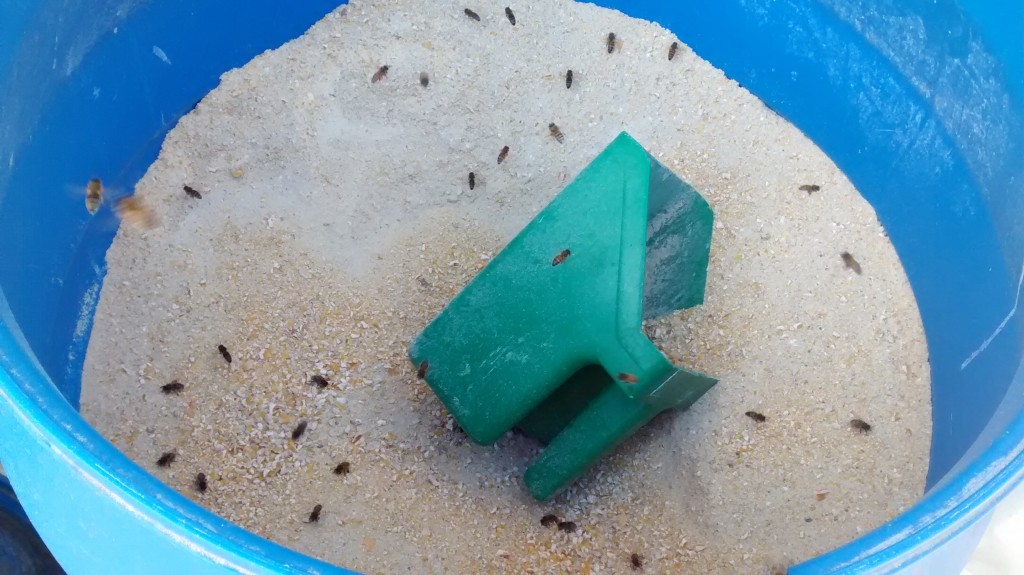We’re back to near normal temperatures after that stretch of unseasonably warm days in late February.
Maybe you noticed last week all the honey bees that were out flying. They took advantage of the nice days to make their cleansing flights to defecate outside the hive. Bees avoid passing their digestive waste inside the hive whenever possible.
They also worked to remove the bodies of bees that had died during the winter as part of their natural housekeeping behavior.
One thing that surprised me was the number of bees out foraging for pollen. Of course in the middle of February there were very few, if any, flowers to visit. I noticed a few flowers blooming in micro-climates that are located in well-protected south facing areas. That wasn’t enough to really collect much pollen.
I keep a several dozen laying hens on my property. During the winter they’re fed a special recipe that I have specially made at our local grain mill. The bulk of the recipe is locally sourced corn and protein supplement along with some vitamins and minerals. All the ingredients are ground up and mixed together by the mill. The result is a dry, coarse mix that has a wide variation in particle side ranging from slightly cracked corn all the way down to fine grain dust. The dust component is so fine it can easily be blown about by the wind.
Last week I unintentionally left the top of my feed storage open for part of the day, usually I close it right away to keep the rain out. Late in the day when I when to give the hens their afternoon meal I was startled to see dozens of honey bees flying in and out of my feed bin. They were carrying away tiny loads of very fine chicken feed on their legs where they normally carry pollen.
Flower pollen is highly variable in food value. Protein content ranges anywhere from just a few percent to 40 percent or more. Many factor determine the amount of protein present in pollen; plant species, growing conditions, and rainfall among others. Protein content may even change somewhat during the growing season.
My chicken feed recipe is about 18-20 percent protein which falls in the lower range of pollen. It’s not as high as real pollen but it also contains vitamins and minerals necessary for chicken as well as bee growth.
I guess the bees decided since there were no flowers, they’d do the next best thing and collect a pollen substitute to take back to the hive. Heck, they were out flying anyway so, why go back empty handed?
Inside the hive, the bees will pack the grain dust into honey comb cells where it will ferment, just like real pollen. The process is sort of like what we do make pickles, cheese, sauerkraut or beer. The fermentation process breaks down the indigestible components into an edible form that young bee larvae can more easily digest.
Once the flowers start blooming, the bees will probably lose interest in the chicken feed. They’ll happily go back to collecting their preferred protein source, flower pollen.
Bob
